Best Android smartwatch 2024
The best smartwatches for Android, as reviewed and rated by our expert staff.
The best Android smartwatch must strike a balance, offering fast apps on a high-res display, efficient battery life, and all the intangibles you get from fitness watches, like consistent health and sleep data. You'll also want a reasonable price tag and a sleek design you can be proud of!
We've worn, field-tested, and reviewed just about every wearable on the market, so if you're looking to choose the right Android watch for your needs and budget, you've come to the right place.
The Samsung Galaxy Watch 7 and Pixel Watch 2 predictably top our list, as the two best smartwatch options for most Android users. If they're not the right fit, rest assured that we've got plenty of other options, from gorgeous hybrids to fitness trackers and cheaper last-gen models.
We're highlighting all types of wearables across a range of prices, so keep reading to find the watch that's right for you.

Michael Hicks is Android Central's resident smartwatch geek, having reviewed or tested dozens of wearables from Samsung, Google, Apple, Garmin, Fitbit, Coros, Polar, Withings, Amazfit, and others. He spends his free time running or hiking while wearing several watches at once, testing which is most accurate.
At a glance
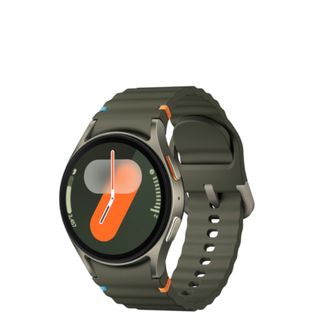
Best overall
The Galaxy Watch 7 has the durability, performance, health and fitness accuracy, and lightweight design to go with its excellent Wear OS software for an all-around great experience.
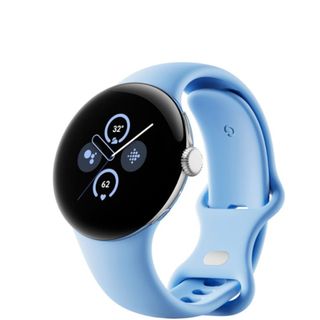
Best for Wear OS
Google took the Pixel Watch 2 to the next level in terms of performance, battery, lightweight design, and health sensors. It's great for Pixel users, but also Android users in general.
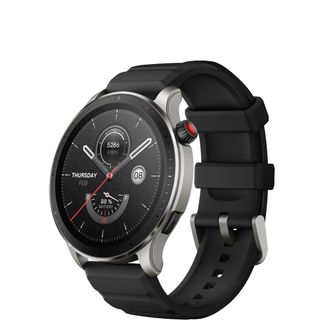
Best budget option
If phone notifications are all the "smarts" you need, the GTR 4 has fantastic fitness tracking and battery life, plus a classic design, for significantly less than our other top picks.
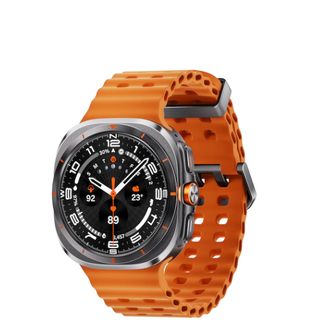
Best premium pick
Samsung's first flagship smartwatch takes a new design approach to the Classic, borrows the Pro's battery life, and takes cues from Apple's own Ultra watch.
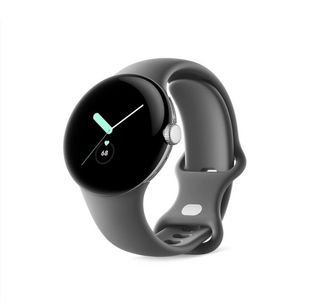
Best last-gen option
Although we certainly recommend the Pixel Watch 2 first, you can snag this for at least $70 less, with a very similar software experience and stylish look.
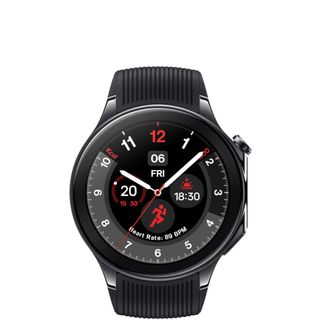
Best battery life
The OnePlus Watch 2 has its flaws, but its 100-hour battery life certainly isn't one of them. We also love its gorgeous steel design, large display, and reasonable price. If only OnePlus could fix our noted issues with heart rate tracking, it would be much higher on this list.
Load the next 3 products ↓
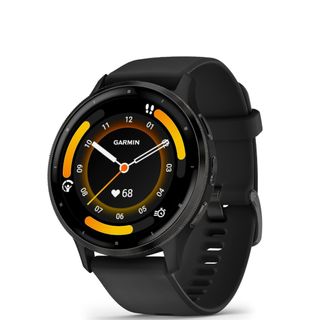
Best for fitness
Nearly any Garmin watch gives you fitness tools and battery beyond a typical Android watch; only the Venu 3 gives you a mic & speaker, gorgeous AMOLED, and Sleep Coaching.
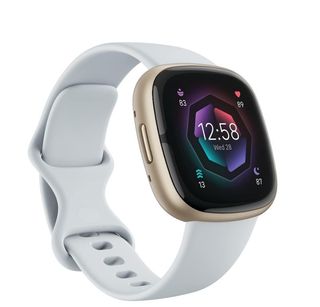
Best for health tracking
The Fitbit Sense 2 boasts about every health feature you could ever need, including 24/7 heartrate and stress monitoring, sleep quality tracking, and much more.
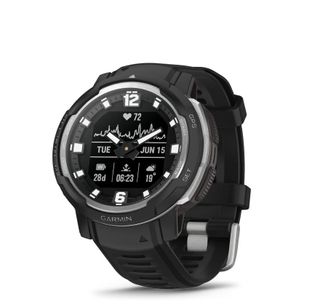
Best hybrid
Get the best of both worlds with the Garmin Instinct Crossover, a rugged smartwatch that features analog hands alongside GPS, heart rate monitoring, and an epic battery life.
Best overall
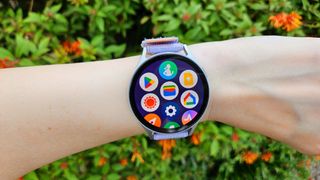
Specifications
Reasons to buy
Reasons to avoid
The Galaxy Watch 7 looks mighty similar to the last three Samsung watch generations, but plenty has changed under the hood. While Galaxy Watch 6 owners may decide to sit pat, any other Samsung fans have plenty of reasons to upgrade.
Our Galaxy Watch 7 review runs through the highlights. Even though it "feels like a re-run" at first, new software tricks like accessible gestures and a daily Energy Score make the experience fresher. It's the "zippiest smartwatch I've ever used" thanks to the new Exynos W1000 CPU, but it's "not magnitudes faster" than the already-fast Watch 6.
Specific to athletes, the Galaxy Watch 7 received triple the sensor LEDs, designed to capture more accurate heart rate data during workouts. Plus, it uses dual-band GPS to avoid signal errors and provide the most accurate outside workout data.
Other Android watches are only now starting to catch up to the Galaxy Watch series in areas like its large, thin-bordered display, MIL-STD-810H and IP68 durability, and fast charging speeds. And they still fall behind in one key area: Samsung offers four years of software and security updates, so you can expect your Watch 7 to last until 2028, when other watches would be long abandoned.
Unlike the Watch 6, the Watch 7 has no "Classic" option, meaning you're stuck with the digital bezel with no physical bezel option. Still, as finicky as that can be, it's better than relying solely on buttons. It lasts about two days per charge in our tests, which is solid but is eclipsed somewhat by the pricier Galaxy Watch Ultra and other watches on this list.
Bottom line: The Samsung Galaxy Watch 7 retains its crown as the best Android smartwatch on the market, thanks to improvements to its performance, battery life, health sensors, and software on top of the solid Galaxy Watch 6 foundation. You can find watches that look fancier or last longer, but you won't find anything more affordable that's any better.
Best for Wear OS
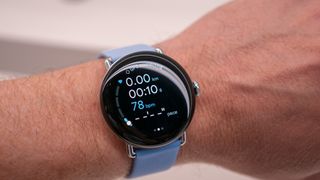
Specifications
Reasons to buy
Reasons to avoid
We polled the Android Central staff as to whether the Pixel Watch 2 or Galaxy Watch 6 is the best Android smartwatch, and it led to some passionate debate. In the end, although several staff members said they preferred the Pixel Watch 2 personally for its design and UI, the Galaxy Watch 6 beats the Pixel Watch 2 for battery life, multiple size options, display brightness, durability, and other key areas.
Still, as our Pixel Watch 2 review indicates, Google's latest watch gets a ton of things right and may be a better choice depending on what you want. The improved rotating crown gives you reliable controls while weighing less than the Watch 6 Classic's physical bezel; the Pixel Watch 2 itself "barely even feels like it's on your wrist." And the Pixel Watch 2 doesn't have any Pixel-exclusive features — something that can't be said about the Galaxy Watch 6.
The Pixel Watch 2 has double the Galaxy Watch's storage, plus the benefit of Fitbit Premium fitness tracking and health reports where Samsung falls short. Performance is also a major step up between the last gen's Exynos chip and this model's Snapdragon W5 chip, paired with a healthy 2GB of RAM; in our tests, the load time for apps seems comparable between both watches.
If we have one key complaint, it's that the Pixel Watch 2 only comes in one 1.2-inch display size with a thick bezel. We've heard rumors that the Pixel Watch 3 will have 45mm and 41mm sizes, but you'd have to wait a bit longer for a larger option.
Bottom line: If you want "one of the most striking and beautiful smartwatches on the market" that bundles Wear OS and Fitbit, this is the watch for you. We wish it had more than one size option, but it's comfortable, speedy, and receives regular feature and security updates.
Best budget option
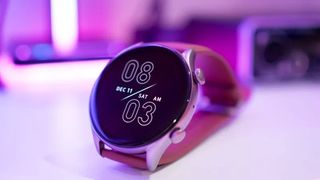
3. Amazfit GTR 4
Our expert review:
Specifications
Reasons to buy
Reasons to avoid
Amazfit has about a dozen smartwatches that it sells at any given time, most of which fall into the budget category for anyone who can't spend much on an Android watch. Among the best Amazfit watches, the Amazfit GTR 4 is among our favorites thanks to its Alexa voice commands, music storage, and Bluetooth calling. Traditional smartwatch tools, plus the classic-style design, make it a better choice than most.
Our previous choice for this spot, the Amazfit GTS 3 Pro, had most of the same perks but has now fallen behind a generation. With the Amazfit GTS 4, you also get the ability to continuously track heart rate, blood oxygen, stress, and sleep quality, with an extra two days of battery life (14 days in total). Unlike most of the best Android smartwatches, this won't make you charge it daily.
You won't get the same Android phone integration for actionable notifications or any third-party apps, since this uses Amazfit's own OS instead of Wear OS. But in terms of fitness, it's smarter than the competition: It can auto-detect multiple sports or weight-lifting activities, track your location more accurately with dual-band GPS, and tell you how long to rest after a workout based on your VO2 Max fitness level.
Bottom line: With the Amazfit GTR 4, you're getting a large AMOLED screen and a gorgeous design, a lag-free interface with lots of customizability, and at least a week of battery life with all features active. Yes, it's not as "smart" for phone connectivity, but it excels at the basics and does better than most at fitness smarts.
Best premium pick
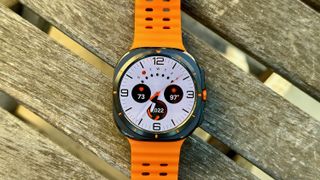
Specifications
Reasons to buy
Reasons to avoid
After a Galaxy Watch Pro in 2022 and Classic in 2023, Samsung pivoted to the Galaxy Watch Ultra in 2024, a powerful and stylish flagship that took inspiration from the Apple Watch Ultra 2. It's not necessarily that different from the Galaxy Watch 7 in raw specs; it's primarily designed as an ultra-durable, long-lasting watch for those who prioritize style and battery life over comfort.
Like the Galaxy Watch 5 Pro, the Watch Ultra has a 590mAh battery, larger than the 425mAh capacity found in the Watch 7 with a comparable 1.5-inch display. While the Pro consistently lasted three days at launch, changes to Wear OS and the demands of the Ultra's 3,000-nit display and extra health sensors burn through the same capacity more quickly. Still, this is the best battery life option Samsung offers.
Our Galaxy Watch Ultra review highlights many of the same perks as the Watch 7, like its excellent fitness accuracy and its "undoubtedly faster" performance compared to previous generations. We appreciate the extra Quick Button for shortcuts, though our reviewer wished that (A) it doubled as a crown to make up for the missing Classic bezel and (B) let you add multiple shortcuts outside of workouts.
We find the Ultra design "attractive and distinct" from most other watches thanks to its circular display atop a squircle case, but we can't deny how heavy this may feel if you're used to the standard Galaxy Watch weight. Thankfully, you have multiple comfortable Watch Ultra band options that offset the weight. It's not a watch most people will want to wear for sleep tracking, so you may opt for a Galaxy Ring to accompany the Ultra (if you can afford it).
Bottom line: The Galaxy Watch Ultra has multi-day battery life, durable design, vivid display, powerful performance, strong software support, and several premium perks, making it the best Android watch if money is no object. Ideally, you can find a good trade-in deal to make the Ultra slightly more affordable; otherwise, it has very few downsides besides its weight and the lack of physical bezel or crown.
Best last-gen option
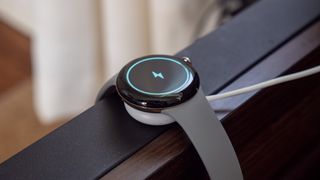
Specifications
Reasons to buy
Reasons to avoid
Most smartwatches don't get many updates after launch. The exceptions are Samsung and Google, which promise four or three years of post-launch software updates, respectively. So if you're going to buy a last-gen smartwatch to save money, you should look at either the Galaxy Watch 5 or the first Pixel Watch.
When you weigh the Pixel Watch vs. Galaxy Watch 5, each has their strengths and weaknesses. Samsung's watch, for example, provides a better battery life and offers a larger size option. But Samsung has stopped selling the Galaxy Watch 5, so you'll have to buy it refurbished; the Google Pixel Watch is still available, and is still worth considering.
Why? For starters, the Pixel Watch 2 kept the same design for a reason: it's stylish and comfortable. In fact, the first Pixel Watch uses stainless steel instead of aluminum, making it look slightly more premium than its successor. Comparing the Pixel Watch 2 vs. Pixel Watch, you'll find that the first-gen watch matches its successor in RAM, storage, display resolution and brightness, Wear OS software, and most Fitbit functionality.
Our Pixel Watch reviewer praised many of the same positives that ported over to the Watch 2, such as the "subtle and satisfying" rotating crown and "snappy" performance. While the Pixel Watch 2 is slightly better for battery, this should still last you a day per charge.
Bottom line: The Google Pixel Watch remains one of the best Android watches despite being supplanted by the Pixel Watch 2. Look at the newer watch first, but if you spot this on sale, it's still a reliable watch.
Best battery life
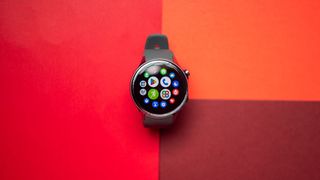
Specifications
Reasons to buy
Reasons to avoid
Long-time Android brand OnePlus made its first Wear OS watch in 2024, and immediately jumped to the front of the Android smartwatch pack for battery life. Our OnePlus Watch 2 reviewer noted that it truly does last about four days per charge, or slightly less than three with the always-on display enabled.
OnePlus made the best Android watch for battery life by relying on a dual-OS system: It uses the powerful Snapdragon W5 chip and 2GB of RAM for demanding app tasks, but for background tasks, it uses a proprietary RTOS that relies on a co-processor, which itself barely uses any battery life. It's part of a new Wear OS Hybrid interface that Google developed in tandem with OnePlus.
The downside to this system, as our reviewer noted, is that the OnePlus watch can be more of an RTOS watch than a Wear OS watch in many ways, and its own system has issues with notifications and health tracking that OnePlus still needs to resolve. Since the OnePlus Watch 2 will get two Wear OS updates, we're hopeful that these issues will be fixed with time; for now, it's a bit of a risky purchase.
Still, this is an excellent smartwatch, thanks in large part to its beautiful 1.43-inch AMOLED display surrounded by durable stainless steel. If you compare the OnePlus Watch 2 and Pixel Watch 2, you'll find that the OnePlus watch is much better for simply using Android apps, thanks to the extra display space. But people with smaller wrists may wish OnePlus sold a smaller version that's more comfortable to wear.
Bottom line: The OnePlus Watch 2 lasts longer than any other true smartwatch on the market, with years of promised support as well. If OnePlus can resolve our noted issues with its heart rate tracking, as well as fix some notification settings problems our reviewer found, then this could find its place next to the Galaxy Watch 6 and Pixel Watch 2 as one of the best Android watches.
Best for fitness
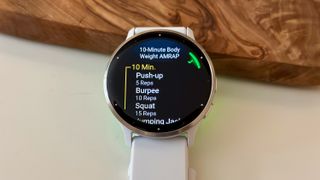
Specifications
Reasons to buy
Reasons to avoid
You can't discuss the best Android watches and not mention Garmin. Frankly, any of the best Garmin watches could be in the conversation to join this list, but the Venu 3 is the closest Garmin comes to a mainstream smartwatch with traditional tools like a mic/speaker and ECG sensor, so it claims this spot.
A Pixel Watch 2 with Fitbit Premium can take your health and fitness data and give you a Daily Readiness Score and recommendations for how long to work out at what exertion level. The Garmin Venu 3 does the same thing, only with more specificity and without a subscription. It tells you how many hours of recovery time you need after a workout, how much your Body Battery has recharged based on HRV and sleep data, and lets you follow a Garmin Coach training calendar with specific workouts.
When testing the Garmin Venu 3, our reviewer noted how this watch modernized the Garmin OS software to make it more accessible. It added a Sleep Coach, an app folder, a more accessible workout widget, and a fantastic wheelchair mode. It even added a keyboard for replies, though it's slow enough that pulling out your phone or using the voice assistant makes more sense.
The Venu 3 itself lasts a ridiculous 2 weeks per charge, or 26 hours of GPS tracking, whereas your typical Android watch will probably die after maybe five hours of satellite data. Along with continuous heart rate and blood oxygen data, you can check for AFib rhythm or measure your skin temperature while sleeping. Plus, it looks much more stylish on your wrist with its thin, steel-bezel design instead of Garmin's usual thick and plastic aesthetic.
It has one key downside, specific to Android users: It doesn't connect to Health Connect, Google's replacement for Google Fit. So syncing its data with other devices is a challenge unless you use an unofficial option like Health Sync. If you can live with that, then you're golden.
Bottom line: Although not as "smart" as the other picks on the list, the Venu 3 makes up for this by running much more efficiently, lasting for weeks at a time without issue. Athletes who want animated exercise guidance and non-stop sensor tracking without fear of their watch dying on them should take a close look.
Best health tracking
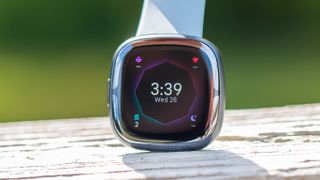
Specifications
Reasons to buy
Reasons to avoid
The Fitbit Sense 2 tracks your heart rate, heart rate variance (HRV), possible atrial fibrillation (AFib), blood oxygen, sleep quality, stress levels, and skin temperature. The last two, in particular, are where the Sense 2 stands apart: the new continuous electrodermal (cEDA) sensor has all-day body response tracking to warn you if you're overstressed, while the temperature sensor can warn you if you're possibly unwell and judge if your body temperature is hurting your sleep quality.
When reviewing the Sense 2, we appreciated how Fitbit used its Google connections to implement Wear OS-like menus, a physical side button that's a major improvement over the capacitive button on the original Sense, and implemented some Google apps like Wallet and Maps, making it the best Fitbit device available.
It also has a stylish design with a bright AMOLED display and a six-day battery life with standard use. That consistent battery life and extra sensors are why you might consider the Sense 2 over the Pixel Watch, which also has Fitbit integration but lacks the health data to provide the comprehensive reports that make Premium worth using.
Bottom line: As one of the most popular names in the wearable world, Fitbit is always a good option. The Sense 2 is centered around health and fitness tracking, ideal for workout enthusiasts or anyone who needs to keep a close eye on their heart health.
Best hybrid
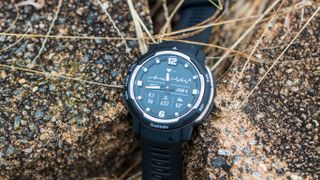
Specifications
Reasons to buy
Reasons to avoid
Garmin excels at making versatile hybrid smartwatches that don’t skimp on the features you need, and the Instinct Crossover is no exception. At first glance, the Garmin Instinct Crossover appears to be another ultra-rugged wearable, with an analog face and physical hands that keep track of the minute and hour. The watch is constructed from durable fiber-reinforced polymer and stainless steel, while the 10ATM water-resistance rating guarantees that you can take this watch just about anywhere.
Despite its no-frills, analog appearance, the Garmin Instinct Crossover is compatible with both Android and iOS, and you get all of the health and fitness tracking sensors you could ever need, such as heart rate monitoring, stress tracking, and Pulse Ox. The watch also comes with built-in GPS and Garmin Pay. When we reviewed the Garmin Instinct Crossover, we also found that the watch is truly incredible in the battery life department; even when you don’t buy the Solar edition, the Crossover will last up to 28 days on a single charge in smartwatch mode and a whopping max of 71 days when it’s in battery saver mode.
Bottom line: If you’re looking for a hybrid smartwatch that you can count on, don’t sleep on the Garmin Instinct Crossover. Complete with a rugged design and analog hands to mark the minute and hour, this watch gives you old-school reliability with modern smartwatch features, such as GPS, heart rate monitoring, Pulse Ox, and more. Plus the battery will last almost a full month on a single charge in smartwatch mode.
How to choose
What is the best smartwatch for an Android user?
Why you can trust Android Central
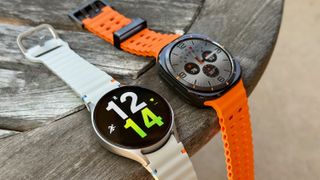
First and foremost, Android users should look at the best Wear OS watches, since they have the best integration with your smartphone. But not all Wear OS watches are created equal.
Fossil, a mainstay on this list for years, have left Wear OS behind after years struggling to adjust to the new Wear OS 3 ecosystem. Mobvoi itself took a year longer than expected to update its Wear OS 2 watches to 3, and its latest flagship TicWatch Pro 5 and Pro 5 Enduro are still running the Wear OS 4 beta, with no Google Assistant and the upcoming Wear OS 5 unconfirmed.
OnePlus is an intriguing new option, with the Watch 2 and Watch 2R targeting the top brands for battery life and affordability. Buyers in Europe and Asia could also consider Xiaomi, now that it's adopted Wear OS, but we've yet to review these watches.
One key reason why we recommended the Galaxy Watch 6 and Pixel Watch 2 above the rest: Google will release new Wear OS updates every year between summer and fall, but only Google and its close partner Samsung are guaranteed to get the new features. Google and Samsung promise three and four years of updates for new products, respectively.
You don't have to choose a Wear OS watch, of course. Brands like Garmin and Fitbit are better suited for fitness fans, but also for folks who don't like using smartwatches beyond basic functions. Some people don't need watch apps if they'll happily use their smartphone for the same functions.
How do I choose smartwatch size?
Brands like Samsung and Garmin sell their watches in two sizes, so you can either prioritize comfort or display size. A Pixel Watch, on the other hand, only comes in one size, and it's on the smaller side.
A large display is very tempting to get the best view of apps and custom watch face data, but it could also make the watch heavier than your wrist can handle. If you prioritize comfort, you may not like having to bring the display closer to your eyes to read your notifications.
We can't forget about aesthetics, either. After all, you're still shopping for a watch, and it should be compatible with your style. You can always opt for one of the fashionable options. If you're looking for the best smartwatch for women, you might prefer something more subtle like the Fossil Gen 6. We'd point you to the Pixel Watch 2, with its fantastic edge-to-edge look that others can't match.
What features should I look for in a smartwatch?
These are some key smartwatch features that you won't see by default, and may have to go out of your way to find:
- More than one day of battery life
- NFC
- Third-party app support
- Fitness training apps or plans
- LTE support
- Passive AFib detection
- Fall detection
- Multiple tracking satellites
- MIL-STD-810G protection
- Specific controls (e.g., crown, rotating bezel, multiple buttons)
- Specific sensors (e.g., temperature, gyroscope, altimeter)
Of these, we have specific guides on the best smartwatches with LTE so you can make calls or check in without your phone on hand, or the best smartwatches for GPS tracking that offer more than the standard watch antenna that can only follow one satellite at a time.
You'll want to check if your watch supports tap-to-pay, or will register if you've fallen while working out or walking around your home. Folks with heart issues will also want to make sure you can check for irregular heart rhythm, either actively with an ECG or passively with a standard optical HRM.
Also, check the smartwatches' specifications page before buying to make sure you know what you're getting. For example, if you don't see an altimeter, that means your watch can't tell how many flights of stairs you've climbed or properly judge how hard you're working out.
Which smartwatch OS is best?
Wear OS is your best option because it syncs so completely with Android phones. Still, not all Wear OS versions are created equal. If a watch still uses Wear OS 3 or 3.5 today, that probably means the brand is struggling to implement certain features like Google Assistant, limiting the likelihood it'll ever catch up to the Galaxy or Pixel Watches.
Other smartwatch companies such as Garmin and Fitbit use their own operating systems. These are typically rudimentary in what they offer. Garmin offers a few downloadable apps like Spotify or partnerships with Strava and Komoot, but not anywhere near the level that a Wear OS offers. That's the trade-off you have to accept for the superior battery life.
How much battery life do I need in a smartwatch?
Some users can't stand having to take their watch off every 24 hours to charge it. Luckily, there are many multi-day battery life picks on this list.
The Pixel Watch 2 and Galaxy Watch 7 fall into the category of daily charges. The Pixel Watch 2 typically lasts slightly above 24 hours, while the Galaxy Watch 7 can last two days in ideal conditions but usually requires a mid-day charge on day two.
For a better option, look at the Galaxy Watch 5 Ultra, Ticwatch Pro 5, or OnePlus Watch 2 and 2R. These should all last you two or three days depending on your settings.
If that isn't good enough for you, either, then you don't want a traditional smartwatch. You want an efficient fitness watch from Garmin, Fitbit, COROS, Polar, Suunto, or other fitness watch brands. These can last anywhere from a week (the Fitbit Sense 2) to two weeks (Garmin Venu 3), or sometimes even months with something like the Garmin Instinct 2X Solar.
What are the best Android smartwatches?
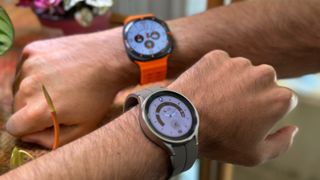
If you're currently in the market for the best Android smartwatch, you should consider our best overall pick, the Samsung Galaxy Watch 7. This wearable is loaded with many features that users are looking for, and will retain its software support and trade-in value for years to come.
What makes the Galaxy wearables so great is the new Wear OS 5 platform mixed with powerful hardware and a complete sensor suite designed to track all of your health data, day and night. Samsung Health has also improved immensely over the last couple of years and features a well-rounded selection of workout tracking options, as well as a built-in dual-band GPS for monitoring outdoor runs or bike rides.
If you're not interested in a Samsung smartwatch or simply prefer how Google does things, we recommend the Google Pixel Watch 2 for obvious reasons. It gives you most of the same perks, but with a Pixel-like flair that other Android users will love.
Be an expert in 5 minutes
Get the latest news from Android Central, your trusted companion in the world of Android

Michael is Android Central's resident expert on wearables and fitness. Before joining Android Central, he freelanced for years at Techradar, Wareable, Windows Central, and Digital Trends. Channeling his love of running, he established himself as an expert on fitness watches, testing and reviewing models from Garmin, Fitbit, Samsung, Apple, COROS, Polar, Amazfit, Suunto, and more.
- Patrick FarmereCommerce Editor
- Andrew MyrickSenior Editor - Chromebooks and tablets
- Courtney Lynch